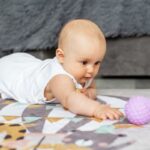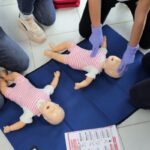E Singapore Math curriculum was named after the country that developed this innovative learning system. It is one of the most cutting-edge ways to learn and build progressive skills for the 21st Century.
Read Also: what is an independent adoption
In the 1980s of the 20th Century, Singaporean economists and scientists developed the ESingaporeMath programme. This was a crucial role in the training of future financiers, economists and sales professionals. Numerous studies have shown that this approach helped the state to emerge from severe crises and prosper in record time.
These are the main differences that set Singapore Math apart from other world standards:
- Philosophy over cramming
- Instead of width, depth
- Working with long-term memories, not just short-term.
- Slow assimilation of material, without repeated repetitions
- Beyond mathematics (critical thinking and communication, modeling),
- Developing the ability to self-study concepts and formulate hypotheses.
All these elements are combined to create a single approach, CPA. It consists of three stages (Concrete. Pictorial. Abstract). This is designed to help students smoothen the transition from physical perception to abstract objects when solving problems or equations.
Despite the fact that parents of preschool and schoolchildren doubted the decision to use this program for their children before the events of 2022, many have made the right choice and are not regretting it.
This article will provide a detailed overview of Singapore Math in order to help parents decide if it is suitable for home education and if their children can succeed at it.
Never Miss: your childs school
Concrete, Pictorial, Abstract
Mathematics is the science and art of abstract elements, such as numbers, square roots, degrees, and so on. Singaporean scientists developed a method (CPA), which allows children to learn abstract elements by transferring from their familiar physical world. Children can visual “think out” their abstract representation by comparing objects around them.
Concrete CPA Stage
The practice stage is the concrete stage. This stage is where students use tangible objects to practice tasks. Examples of small toys, fruits and cards can be used to explain addition and subtraction.
If the task requires children to add pieces of fruit to their work, they can start with real fruit and then continue the operation in their minds.
Pictorial CPA stage
Pictorial is also known as the “visual” stage. Teachers can give students new tasks by introducing visual effects like animations, graphs and diagrams. Students are required to visualize the object without touching it. This stage is also where drawing is a popular practice. If the student has difficulty performing a mathematical operation, he/she may draw the components and “see” how to solve it.
CPA abstract stage
A “symbol” stage is an abstract stage. Here are the math signs (+, +, *, /), and concepts like degrees, fractions and infinity. This stage is for students who are able to independently manipulate numbers and figures without needing to refer to physical objects.
Must Read: custom plush toy best business gift
Stage Post-CPA
Once they have completed these three steps, students can move onto more advanced concepts and skills, such as critical thinking and modeling, communication and hypothesis building.
Pros of Singapore Math
These are the three main success factors and benefits of Singapore Math:
Learning in a spiral fashion – New knowledge and skills are acquired on the basis of existing ones. This allows for progression without repeating.
Visualization – Children “see” from the beginning the meaning of all equations and tasks. They are able to see the meaning of addition and division.
High engagement is a sign of high learning. The learning process is designed so that you can’t yawn in the classroom and also because you won’t be able complete the lesson if the material hasn’t been reviewed. A placement test is conducted at the end of each section. This allows you to evaluate your progress and find any gaps.
High-qualified teachers, who have been trained in both the Singapore Math curriculum and the standard math curriculum, play a crucial role in the success.
Singapore Math: Challenges
This amazing program is easy to use for students. They are more relevant for countries trying to incorporate it into their school curriculum. However, it is often impossible due to the limited number of qualified teachers and discrepancies between examination standards.
These obstacles will gradually disappear in 2022 due to the shifting to the internet and expanding borders. Teachers can teach lessons from wherever they are located, and professionals don’t have to travel to Singapore to start teaching.
Parents who choose this option for their children need not be concerned that their child will fall behind their peers. It’s quite the opposite. They have new opportunities for career and higher education. Exams are not an issue because Singapore Math students learn all the concepts that every child is familiar with. Only the way it is taught is different. Additionally, the curriculum is being used in more exam formats.
Why choose Singapore Math as your home-schooling math program?
Your child will see more possibilities. These skills will be with your child throughout their life. They can also be used in virtually every aspect of life.
You provide personalized learning for your child in a home setting. Your child can also choose the pace and depth of their learning.
It’s also cost-effective, as you don’t need to hire tutors to repeatedly repeat the same material. It is an investment in the foundation of a long-lasting future for your child.
Most Popular: baby on board signs
Conclusion
You can provide a smooth learning experience by educating your child in Singapore Math, exploring each teacher’s program, and then testing it with your child. This will allow you to develop competencies and a multifaceted mindset. It will also help build the foundation for the specialist of the future, who can navigate in ever-changing scientific and professional environments and not fear of chaos, crises, or maladjustment.




